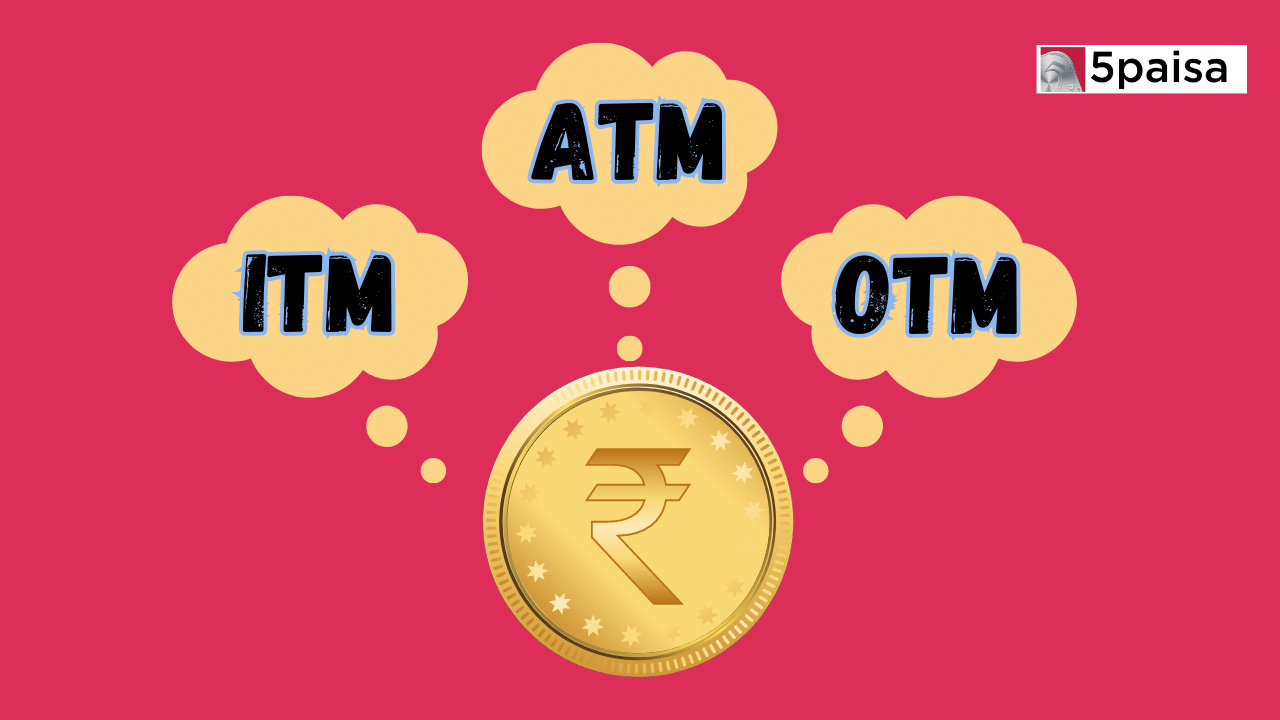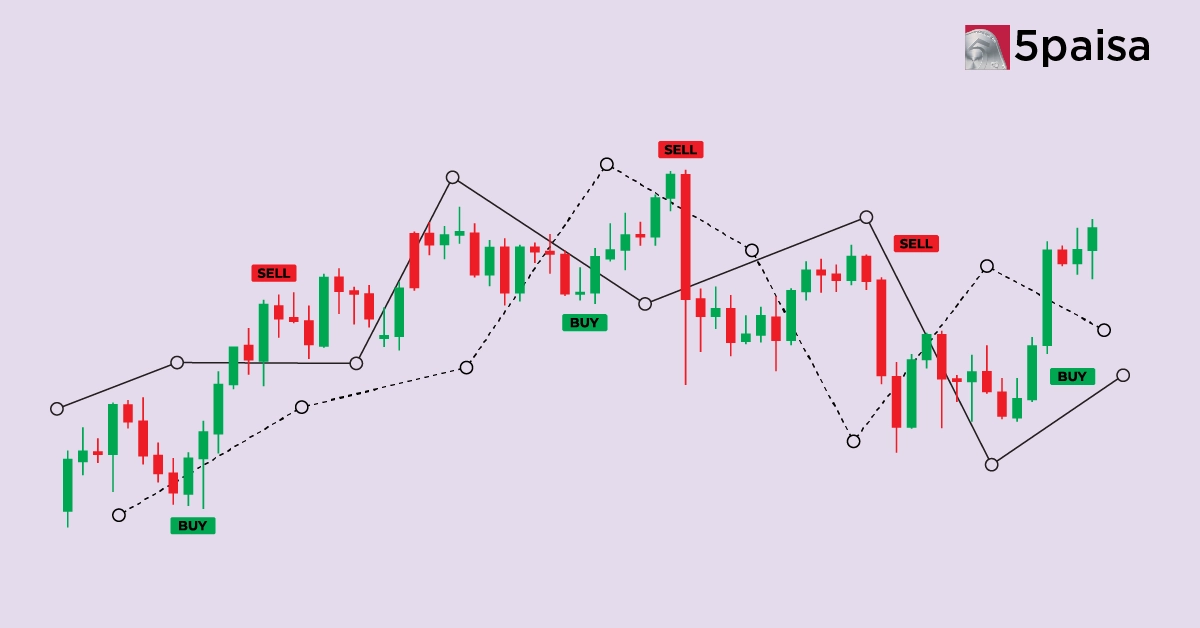Which Indicators Actually Help in Options Trading? A Practical Guide
Key Difference Between ITM, ATM, OTM in Call and Put Options

Last Updated: 9th December 2025 - 12:42 pm
An option premium consists of components, namely Intrinsic value and the Time value.
Option premium = Intrinsic value + Time value
| ITM | ATM | OTM | |
| INTRINSIC VALUE | YES | NO | NO |
| TIME VALUE | YES | YES | YES |
Intrinsic value: The Intrinsic value is the amount by which the strike price of an option is In-the-money. The Intrinsic value for call option will be the underlying stock’s price minus its call strike price, whereas for the put option, it is the put strike price minus the underlying stock price. ATM and OTM options don’t have any Intrinsic value.
Time Value: The Time value is also referred to as the Extrinsic value. It is the excess amount over and above an option’s intrinsic value. Time value decreases to zero over time as the option moves closer to expiration. This circumstance is called as Time decay. Options premium depends on time to expiration. Options that would expire after a longer duration of time would be more expensive as compared to those expiring in the current month as the former would have more time value left, increasing the probability of trade going in your favour.
In-The-Money Call Option
An In-the-money call option is described as a call option whose strike price is less than the spot price of the underlying assets.
In the following example of Nifty, the In-the-money call option would be any strike price below Rs.8300 (spot price) of the stock (i.e. Strike price< Spot price).So, NIFTY FEB 8200 CALL would be the example of In-the-money call. An In-the-money option always has some Intrinsic value and Time value.
At-The-Money Call Option
An At-the-money call option is described as a call option whose strike price is approximately equal to spot price of the underlying assets (i.e. Strike price=Spot price). Hence, NIFTY FEB 8300 CALL would be an example of At-the-money call option, where the spot price is Rs 8300. An At-the-money call option doesn’t have any Intrinsic value and it consists of only time value.
Out-The-Money Call Option
An Out-the-money call option is described as a call option whose strike price is higher than the spot price of the underlying assets(i.e. Strike price> Spot price).Thus, an Out-the-money call option’s entire premium consists of Time value/Extrinsic value and it doesn’t have any Intrinsic value. So, NIFTY FEB 8400 CALL would be an example of Out-the-money call option, where the spot price is Rs 8300.
| NIFTY (CALL OPTION) | Expiry: 23FEB2017 | SPOT PRICE: 8300 | ||
|---|---|---|---|---|
| STRIKE PRICE | STATUS | OPTION PRICE | INTRINSIC VALUE | TIME VALUE |
| 8000 | ITM | 330 | 300 | 30 |
| 8100 | ITM | 240 | 200 | 40 |
| 8200 | ITM | 160 | 100 | 60 |
| 8300 | ATM | 80 | 0 | 80 |
| 8400 | OTM | 60 | 0 | 60 |
| 8500 | OTM | 40 | 0 | 40 |
| 8600 | OTM | 30 | 0 | 30 |
In-the-money put option
An In-the-money put option is described as a put option whose strike price is higher than the current price of the underlying. An In-the-money option always has some Intrinsic value and Time value.
So, the In-the-money put option would be any strike price above Rs8300 (spot price) of the stock. And NIFTY FEB 8400 PUT would be the example of In-the-money put.
At-the-money put option
An At-the-money put option is described as a put option whose strike price is approximately equal to the spot price of the underlying assets. From the following example, NIFTY FEB 8300 PUT would be an example of At-the-money put option, where the spot price is Rs. 8300. An At-the-money put option doesn’t have any Intrinsic value, it consists of only time value.
Out-the-money put option
An Out-the-money put option is described as a put option whose strike price is lower than the spot price of the underlying. Thus, an Out-the-money put option’s entire premium consists of Time value / Extrinsic value and it doesn’t have any Intrinsic value. So, NIFTY FEB 8200 PUT would be an example of Out-the-money put option.
| NIFTY (PUT OPTION) | Expiry: 23FEB2017 | SPOT PRICE: 8300 | ||
|---|---|---|---|---|
| STRIKE PRICE | STATUS | OPTION PRICE | INTRINSIC VALUE | TIME VALUE |
| 8000 | OTM | 30 | 0 | 30 |
| 8100 | OTM | 40 | 0 | 40 |
| 8200 | OTM | 60 | 0 | 60 |
| 8300 | ATM | 80 | 0 | 80 |
| 8400 | ITM | 160 | 100 | 60 |
| 8500 | ITM | 240 | 200 | 40 |
| 8600 | ITM | 330 | 300 | 30 |
- Flat Brokerage
- P&L Table
- Option Greeks
- Payoff Charts
Trending on 5paisa
Futures and Options Related Articles
Disclaimer: Investment in securities market are subject to market risks, read all the related documents carefully before investing. For detailed disclaimer please Click here.

 5paisa Capital Ltd
5paisa Capital Ltd
 5paisa Capital Ltd
5paisa Capital Ltd



